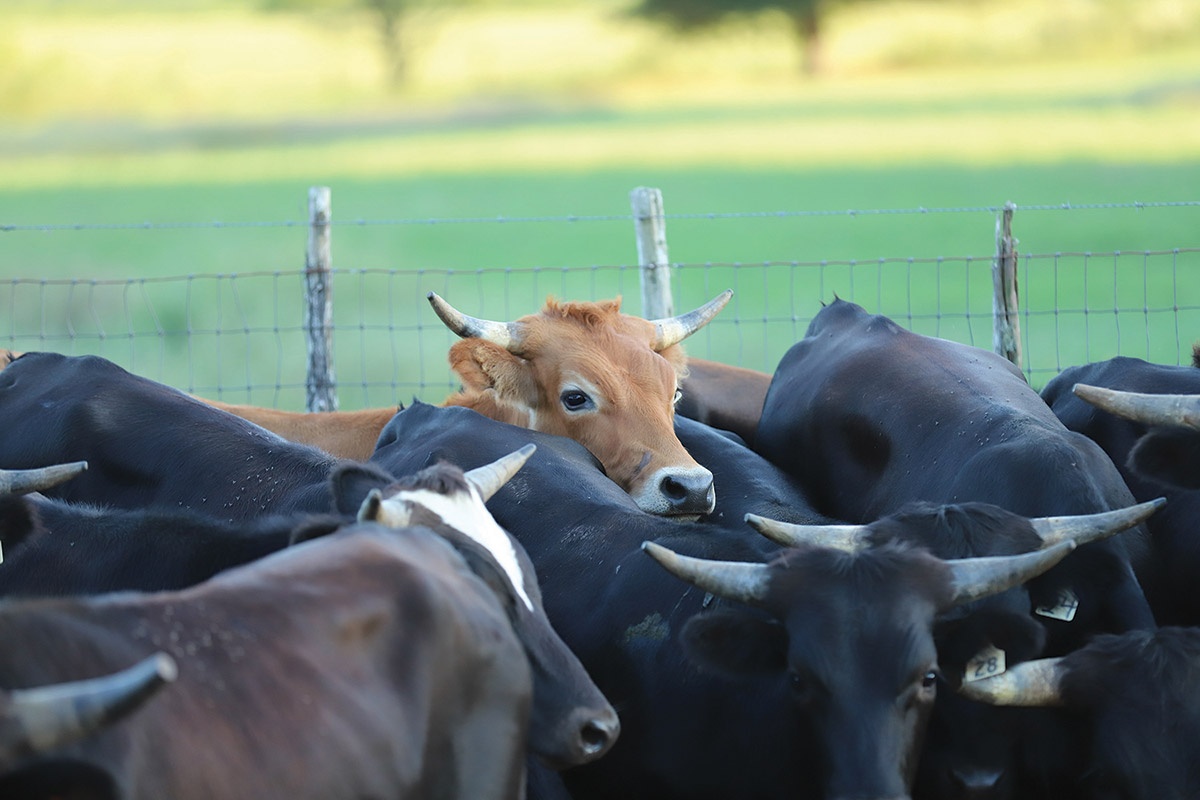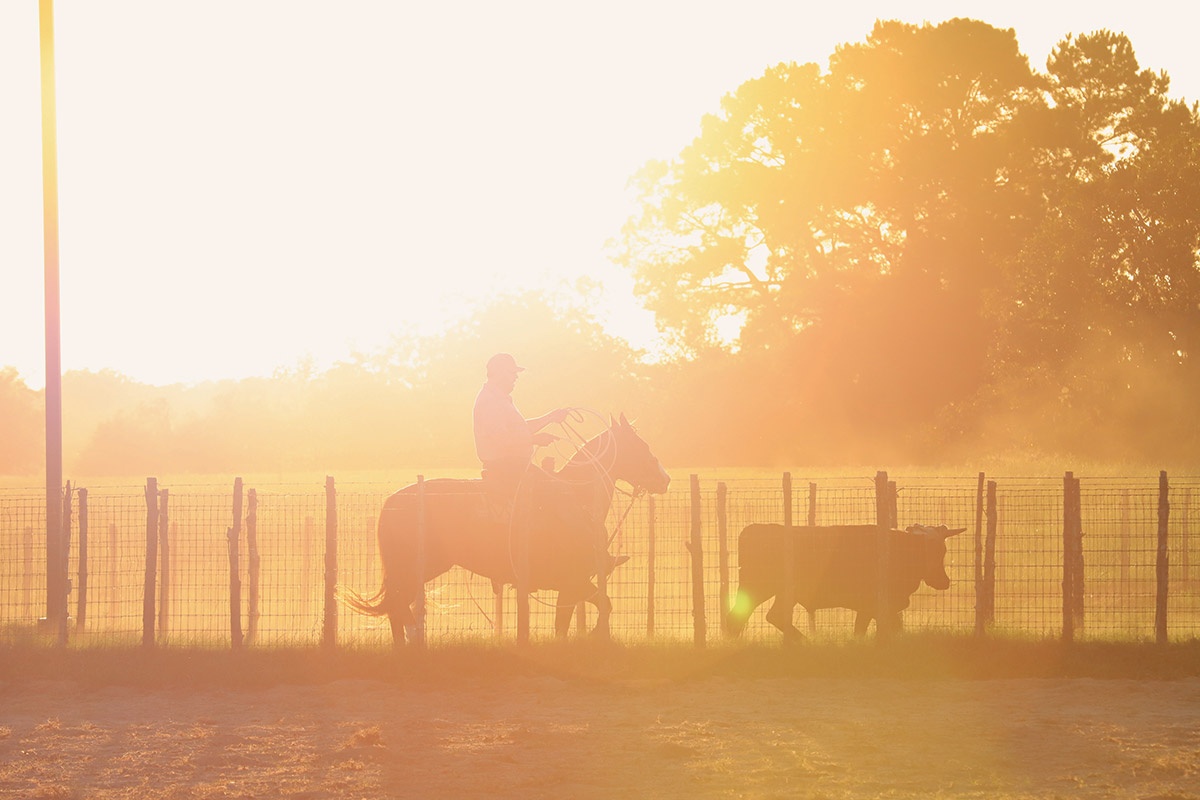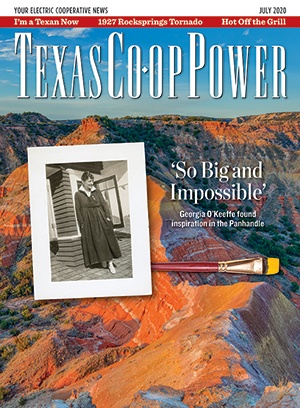A steady stream of cars eases along FM 1988 as families head out for a weekend on Lake Livingston. The road makes a sharp curve near the dam, and a mile or so away, the passersby get a view of the W.R. Baker Ranch arena. Some of the cars slow down—a few even pull off the road—to observe a scene straight out of Texas ranch lore.
A cloud of dust hangs in the morning air as a metal gate flings open and a stout black heifer streaks toward the far end of the arena. Two mounted cowboys race close behind, each swinging ropes and focusing on their targets. One ropes the horns, the other lassos the hind legs and the heifer comes to a stop. The explosion of activity takes less than 10 seconds. Then another black heifer and pair of riders take their places, and the day of team roping continues.

W.R. Baker Jr. has hosted such action-packed team roping events at the family ranch since he helped bring the sport to Polk County in 1980. Baker Jr. grew up on the ranch that his dad, W.R. Baker Sr., started in 1947 after returning home from World War II. Both Bakers understood the role that cattle roping has played in Texas ranch life. In an earlier era, before modern working pens and squeeze shoots, roping was required to immobilize the animal, treat an injury, apply medicine, and for branding. That was especially true in southeast Texas, where ranchers often let their cattle roam in unfenced open ranges.
Neighboring ranchers worked together to sort out their cattle by brand when it was time to work them or take them to market. “In fact, when Dad started out, FM 1988 was a dirt road with cattle guards across it because the cattle still roamed open range,” says Baker Jr., who didn’t get interested in the sport of team roping until well into his 20s.
That interest came courtesy of his college roommate, a Nebraskan roper named Marty Johnson. After graduating from Sam Houston State University in 1979, the partners started hosting team events—jackpot ropings, they called them—at the Baker Ranch, which is served by Sam Houston Electric Cooperative.
“At first it was real easy to do the ropings. We were young, and it was new to the ranchers in the area,” Baker says. The entrepreneurial pair charged ropers an entry fee, took a percentage for producing the event and supplying the cattle and arena, then paid the remainder to competitors in jackpot winnings. “There was something appealing about it, something exciting and fun,” Baker says. “Once ranch families saw it for themselves, they wanted to get involved. And it wasn’t too expensive because they already had the horses.”
The sport took off, growing rapidly during the next decade. As more ropers got involved, so did more roping event producers.

“The business attracted newcomers who had other jobs,” Baker explains. “I had to make a living on the ranch, so our ropings had to make financial sense.”
By the mid-1990s the sport was maturing. Many newcomers dropped out, and producers in it for the long haul shaped team roping into an organized sport. By then, a young generation of participants had grown up in team roping, so skill levels soared along with the quality of horses and cattle. Average winning times dropped by as much as half, Baker says. Bigger events began handicapping competition categories to give more ropers a shot at cash prizes. Sometimes event producers even offered saddles, buckles and truck-trailer rigs to attract top teams.
At 66, Baker still hosts up to 40 team roping events each year, mostly at his ranch but also at other southeast Texas arenas. Baker Ranch events typically involve 150–400 teams comprised of 40 or more competitors (each roper can enter more than one event). The events generally are open to male and female competitors. “Men and women, boys and girls—there’s a place for everybody,” Baker says. To support the sport, he also makes his arena available for memorial and fundraising roping events as well as for practice runs to help promising ropers hone their skills.
Cattle of the Country
From the early days until now, the cattle of choice for Baker and the sport of team roping remains the same—Corriente, a breed that has roots in the beginnings of Texas ranching.
The Spanish term corriente refers to “cattle of the country”—direct descendants of hardy black cattle brought on ships to the New World 500 years ago by the Spanish. The breed was, in fact, part of the first Texas cattle drives. During the early 18th century, Spanish soldiers and priests drove these stocky, horned cattle from the Mexican interior to frontier missions in what are today East Texas and western Louisiana ranges.
The attributes of the Corriente work well in today’s marketplace, Baker says. They require less land than typical beef cattle because of their smaller size—typically 800 pounds versus 1,200 for beef breeds. They also eat less and require less water than larger breeds. Plus they calve easier.

Importantly, Corriente make ideal sport cattle—for team roping and bulldogging—because of their lean, athletic physique; gentle disposition; and long, up-curving horns. By the mid-1990s Baker attained some Corriente steers that had been raised in Mexico. He added some heifers to the new herd and started raising the breed for his own ropings and for sale or rent to other event producers in Texas and beyond.
These days he keeps about 1,000 head of cattle on his 1,000-acre Polk County ranch, plus another 1,500 adjacent leased acres. Most are purebred Corriente, but he breeds Charolais bulls with several hundred Corriente cows each year to supply the beef market, selling through sale barns in Livingston and nearby towns. Baker’s operation is diversified, raising beef and roping cattle.
“The market is tough on farmers and ranchers now, especially with this COVID-19 pandemic,” Baker says.
He’s quick to admit that his first love is Corriente raised for team roping. “I’m raising horns, not pounds,” he often explains. To provide top-quality sports cattle, Baker has to train the Corriente (he uses mostly heifers) how to perform in the roping arena. “Breaking them in” involves practicing the chute release and the sprint across the arena. Then, trainers gradually begin roping them, Baker explains, and training them to head for the stripping chute where staff remove the ropes. Once trained, Corriente heifers can perform for one or two sporting seasons, he notes, then most return to the breeding herd.
Roots Run Deep
W.R. Baker Sr. was only 24 years old when he bought his first 700 acres of Trinity River bottomland near where the Lake Livingston dam would be built in the 1960s. He farmed cotton and corn at first, but soon switched to raising cattle. He moved a small sharecropper cabin to his fledgling ranch by rolling it little by little across poles, as if on a conveyor belt. He used his carpentry skills to improve and expand the cabin, which remains the heart of the ranch.
“Dad and Mom were very generous to me, letting me put cattle on their place and building the roping arena,” Baker says. “Dad told me years ago that he’s not doing me any favor by letting me work on the ranch. He said that if I wanted to do something other than ranching, that’s my choice. But I grew up on the ranch, and that’s all I ever wanted to do.” Baker Sr. died in 2002 having served as Polk County judge for 16 years.
That family tradition carries on. Baker Jr. and his wife, Sherry, built their home on the ranch, as did son Cody and his wife, April, who also work in the operation. All the Bakers, in fact, have their own Corrientes and unique registered brands, including grandkids Hadley, 5, and Libby, 14.
“Ranching is a tough way to make a living, but it sure is good to have family involved in it,” Baker says. “If I had the chance to do it all over again, I’d still choose this life. If you’re happy, everything’s OK. If you’re not, nothing is.”
For more information on the Baker Ranch, call W.R. Baker Jr. at (936) 327-0791. For information about his and other roping events, check the W.R. Baker Facebook page by searching for W.R. Baker.








